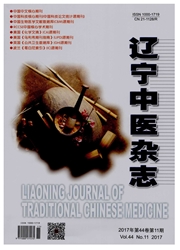

 中文摘要:
中文摘要:
镉极易在人体内蓄积且很难靠自身作用排出体外,对人体危害较大。文章采用大鼠镉染毒试验,观察中药冠心康对镉染毒大鼠血管舒缩因子、黏附因子和主动脉病理及黏附因子免疫组化结果的影响,探索中药防治镉染毒致动脉硬化的可能和机理。结果:大鼠中毒后血清NO水平明显降低,ICAM—1水平明显升高(P〈0.05),HE染色见动脉硬化改变,免疫组化结果见各层均有较多ICAM-1阳性表达,主要存在于粥样斑块区;冠心康低、中、高剂量条件下,NO水平均明显高于染毒组(P〈0.05),ICAM-1水平较染毒组均明显降低(P〈0.05),HE染色内膜较完整平坦。主动脉内膜及平滑肌层均可见少量ICAM-1阳性表达信号,但信号强度明显弱于染毒组,且平滑肌细胞形态及排列明显优于对照对照组,尤以冠心康中剂量组改善明显。提示冠心康对镉染毒大鼠动脉硬化具有保护作用。
 英文摘要:
英文摘要:
Cadmium(Cd) is an easily cumulative pollutant and very difficult to be discharged by body. Feed and interventions experiment were eonducted to explore the protective effects of Guangxinkang. The results showed that NO level in Cd added group was significantly decreased( P 〈 0. 05)compared to the control. In contrast,the level of ICAM-I in ral plasma was significantly in- creased( P 〈 0. 05). In addition,the levels of NO in different doses groups of Guanxinkang were significantly higher than that in the Cd addition group( P 〈 0. 05) ,and the levels of ICAM-1 were significantly lower( P 〈 0. 05 ). The pathological changes of aor- tic cross-section in HE staining showed intima got thickening,partially rupture or loss,with fat vacuoles under the endometrium, and vascular smooth muscle cell(VSMC) became p,'oliferation, hnmunohistochemical results showed that immunohistochemically visualized ICAM-1 occasionally expressed on aortic intima and adventitia of the control group, but expression increased significant- ly in the intima,the middle and outer membrane of aorta,especially cnncentrated on the AS. humunohist~n'henfically visualized 1CAM-I also expressed on aortic intima and smooth muscle layer of the different doses groups of Guanxinkang,but signal strength was significantly weaker than that in the Cd addition group, meanwhile, the shape and an'angement of smooth muscle cells were better than that in the Cd addition group,especially in the middle dose group of Guanxinkang. Thus,Guanxinkang can effectively prevent atherosclerosis in rats induced by Cadmium Chloride.
 同期刊论文项目
同期刊论文项目
 同项目期刊论文
同项目期刊论文
 Effect of fertilizer amendments on phytoremediation of Cd-contaminated soil by a newly discovered hy
Effect of fertilizer amendments on phytoremediation of Cd-contaminated soil by a newly discovered hy 期刊信息
期刊信息
